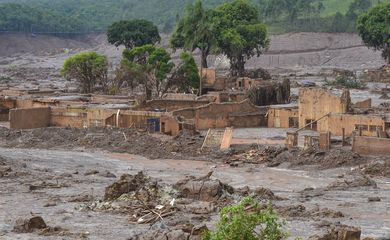Mariana mining disaster spread destruction over more than 660 km of rivers


The mining waste formed a wave of mud that flowed into the Doce river and its tributaries

The environmental disaster caused by the burst of the Fundão dam, owned by Samarco mining company in Mariana (MG), on November 5, has impacted 663 km of rivers and spread destruction over 1,469 hectares of vegetation including permanent protection areas, according to a preliminary expert report issued by the Brazilian Institute for the Environment and Renewable Natural Resources (IBAMA).
Mining waste formed a wave of mud that flowed into the Doce river and its tributaries, reaching the ocean in Linhares, Espírito Santo, in less than five days. The mud traveled down the river at great speed. Retaining blocks were placed at the mouth of the river as an attempt to control the environmental impact a mud spill into the sea. However, the waste ran over the barrier, leaving a huge stain in the sea off the Espírito Santo coast.
According to IBAMA, it is not possible at this point to tell whether the stain has grown or receded in the past days. “Several factors can influence the size of the plume seen on the surface, including wind, currents, the river discharge, rain, and even the measurement methods. We do know that mud is still running with the river. The amount of waste suspended at the mouth varies,” the IBAMA press office reported.
The environmental regulator went on to report that out of over 80 fish species identified as native to the region before the disaster, 11 are endangered and 12 were only found there. But it was the increase in water turbidity, rather than alleged contamination, that has killed thousands of fish and other animals, according to the report.
Since the disaster is still ongoing, it is hard to make any recovery predictions at this time. IBAMA has been monitoring water quality parameters and what species were most impacted. But it says that even more critical than recovering water is recovering the impacted ecosystems. IBAMA will provide an updated report once the waste release has ceased.
There are no assessments at this point as to the impact on marine ecosystems.
Translated by Mayra Borges
Fonte: Mariana mining disaster spread destruction over more than 660 km of rivers



